The Premier League season has reached the business end and in game-week 34, Aston Villa hosted Manchester United. A draw for Bournemouth earlier in the day against Tottenham Hotspur meant that Aston Villa would find themselves in 19th should they lose. Manchester United, on the other hand, were in dominant form having won their last three fixtures by margins of three goals. United were chasing down a Champions League spot and a win would see them move one point behind Leicester in fourth and two points behind Chelsea in third. In this tactical analysis, we will look at the tactics of both these teams over the course of the game.
Lineups
We shall begin our analysis by looking at the lineups of both sides.

Ole Gunnar Solskjær named an unchanged side for the fourth game in a row despite the hectic fixture list. The Norwegian certainly did not seem to want to change what was turning out to be a winning formula for Manchester United, with Bruno Fernandes and Paul Pogba forming an incredible partnership in midfield. Nemanja Matić has also regained his fine form and completed the midfield. The front three of Marcus Rashford, Anthony Martial and Mason Greenwood have been impressive this season, having over 50 goals among the three of them. The defence has also found its feet after a rocky start to the season, with Aaron Wan-Bisakka being the pick of them.
Dean Smith made just one change to the side that faced Liverpool earlier in the week, with Mbwana Samatta replacing Keinan Davis. Although Aston Villa had lost 2-0 to the champions, Smith would have been pleased with the way his side managed to hold them for about 70 minutes of the game. Smith looked to play a 4-4-1-1 formation, with star man Jack Grealish playing behind the striker. Aston Villa have been known to shift this formation to a 4-5-1 or a 4-4-2 as well and this will be something to look out for in our tactical analysis. Smith had been clear that he was looking to thwart the threat of Fernandes and Douglas Luiz and John McGinn had their work cut out in the midfield. Villa did not have the best defence in the league but the likes of Tyrone Mings and Kourtney Hause would have to put in good performances in order to push for a win.
Aston Villa start on the front foot
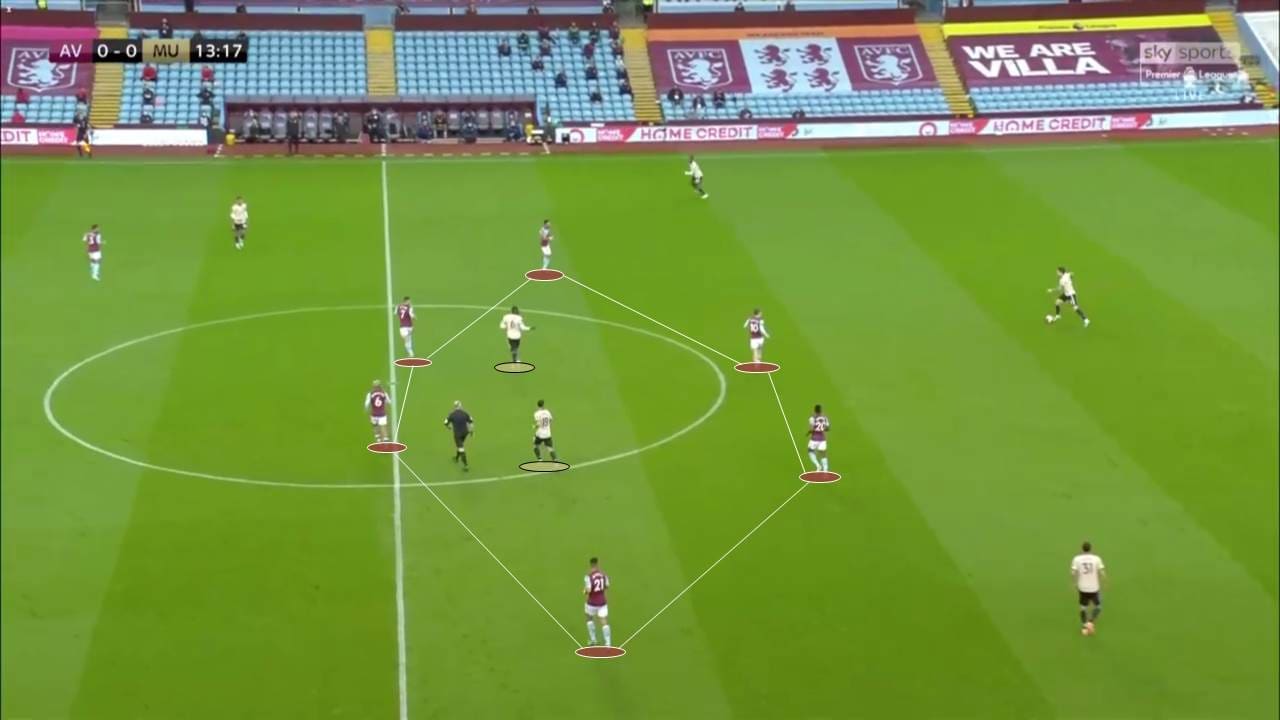
As mentioned earlier, Aston Villa quickly shifted to a 4-4-2 with Grealish playing alongside Samatta in the attack. They looked to press Manchester United higher up the pitch and also restrict the movement of the United midfielders. The four in midfield and two in the attack would often stay close to each other so as to cut off passing options to Fernandes, Pogba and Matić.
Pogba had been playing as a deep-lying playmaker in the previous games and would usually drop back to receive the ball. Matić would drop even further back to play as almost a third centre-back while Fernandes would roam higher up the pitch. However, Villa managed to destabilise the United midfield with their structure, meaning that Matić had to drop deeper while Pogba and Fernandes had to move out of position to receive the ball.
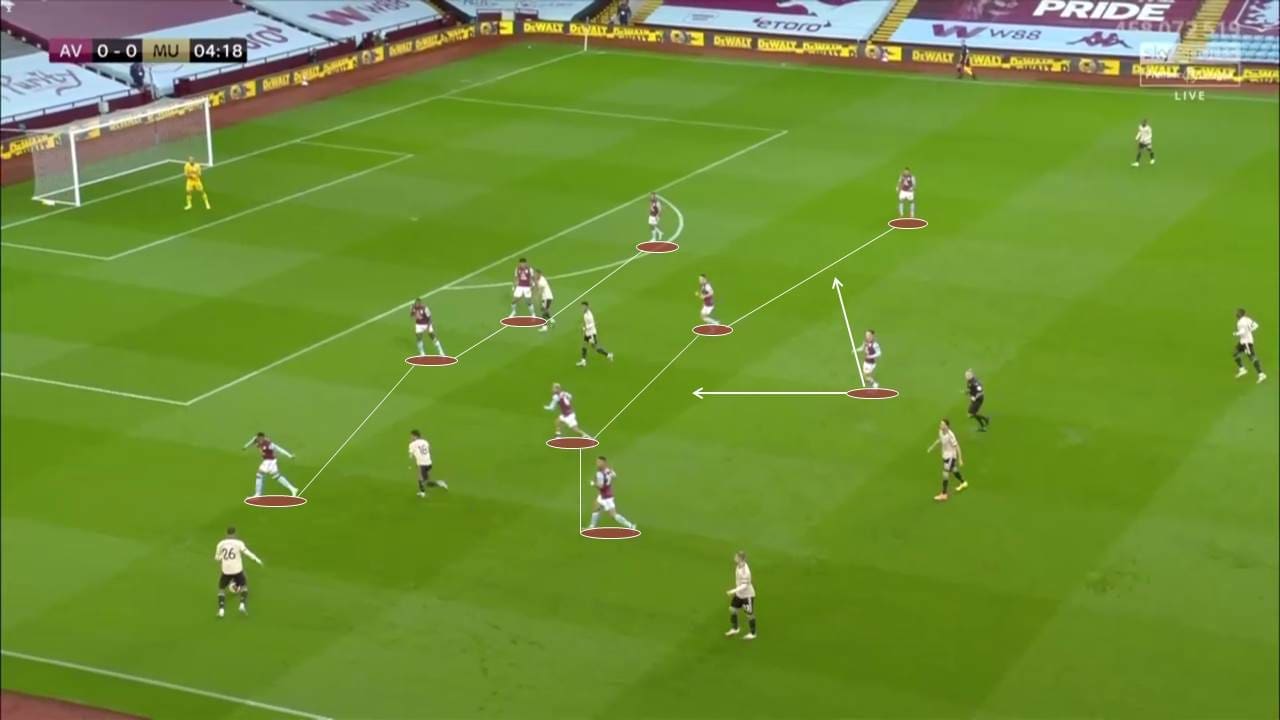
It was clear that Smith’s tactics were directed at containing the United midfield as Aston Villa looked to maintain a similar defensive structure as well. They would quickly shift to a 4-5-1 formation with Jack Grealish dropping into the spaces in the midfield line, and the defenders and midfielders maintaining very close lines. Villa crowded the midfield and this meant that Fernandes was often not able to receive the ball in his preferred central positions. The Portuguese midfielder had to move out wide in order to get the ball and his deft touches and quick passing was not as effective from here.
While this sort of play meant that the likes of Wan-Bisakka and Luke Shaw could press higher, Smith understood that United were not a side that played many crosses but rather preferred to pass their way to the box. Pogba and Matić could also push higher up but this did not create much of an added threat as the crowded Villa midfield proved difficult to surpass despite the creativity in United’s ranks.
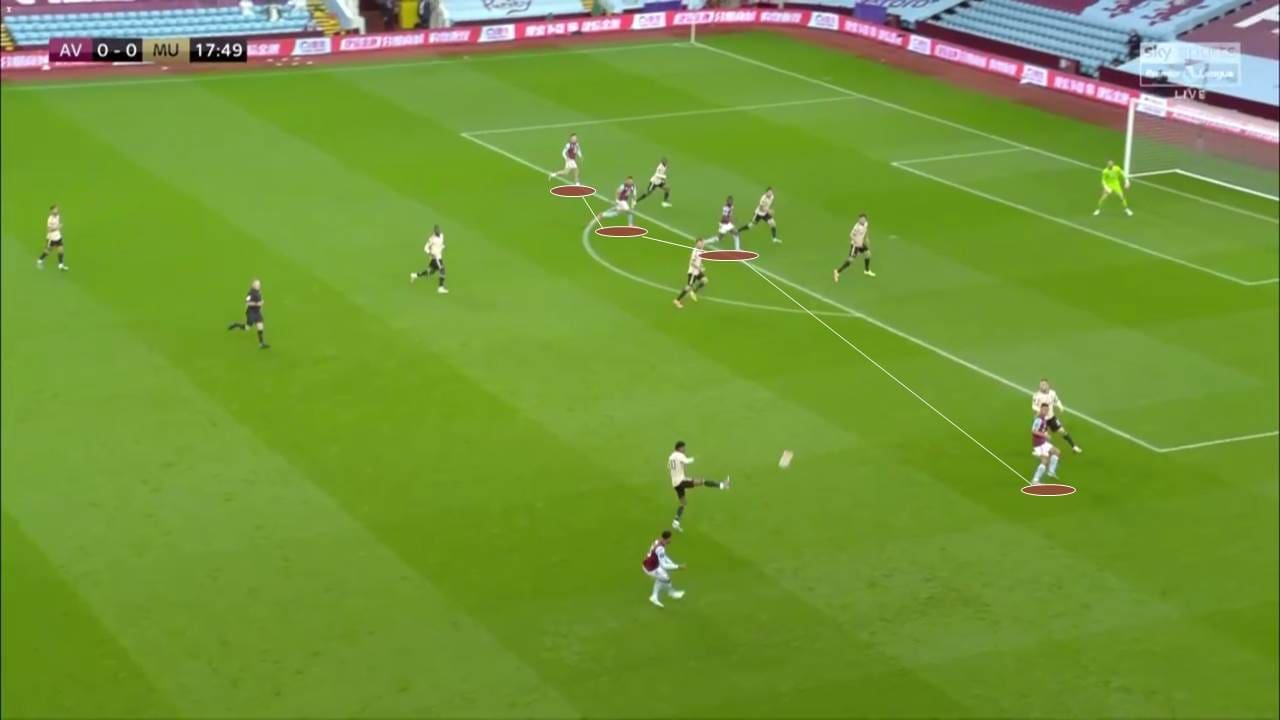
Aston Villa were a side fighting to stay in the Premier League and Smith did not hold back in his attacking tactics. They looked to switch into a 4-2-4 formation as well, with the wingers pushing up and this caused many problems for the Manchester United defence. With the wingers moving higher up, Villa looked to play early crosses into the box and this often meant that Pogba and Matić would not be able to position themselves properly. The backline seemed to be matched man for man by the Villa forwards who would dart into spaces to receive the ball.
The initial stages were clearly dominated by Aston Villa who had threatened the United defence often. However, Villa did not manage to find the target in any of their chances in these early stages despite hitting the post once. Manchester United were looking shaky and it appeared that they would fall behind once again like they did against Bournemouth but they managed to weather this storm and come out unscathed.
Manchester United break Aston Villa down goal by goal (by goal)
An interesting part of the game was how Manchester United were able to break Aston Villa down with every goal that they scored. After the controversial penalty which was converted by Fernandes, United managed to regain their upper hand and started taking control of the fixture.
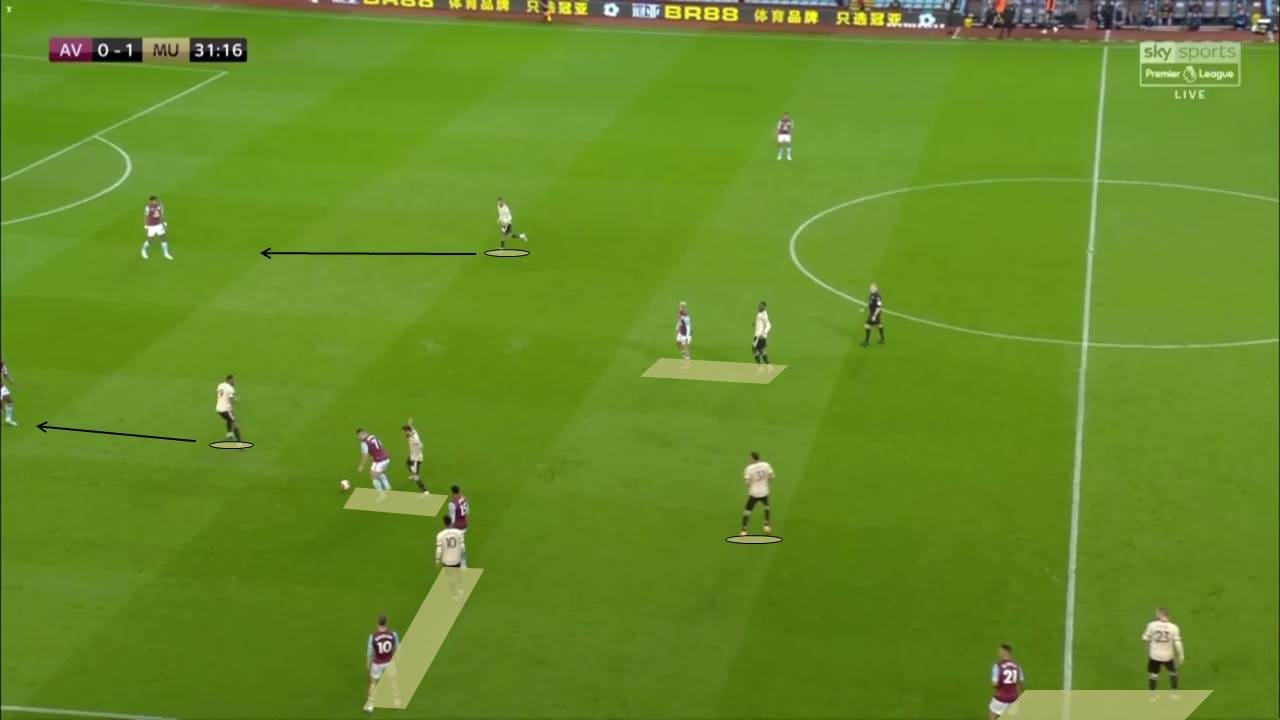
Confidence seemed to come back to Solskjær’s side who begun to press their opponents more effectively after their goal. A feature of United’s performances since the restart has been their ability to press their opponents at the start of the game and sustain that pressure throughout. Villa found themselves on the back foot after their strong performance initially and with Fernandes’ free-roaming role, he was capable of putting pressure on the player with the ball while the others cut down the passing options.
Matić would often act as an auxiliary player in order to help in case a player was beaten and this press meant that Grealish had to drop further back to receive the ball. This weakened Villa’s attacking threat immensely and United were able to manage any attack that came their way. With United taking control of the game, Villa’s attacking tactics were now ineffective as they could not pile the pressure on United. They were simply unable to break down the United defence and were forced to take long shots in the hope of clawing their way back into the game.
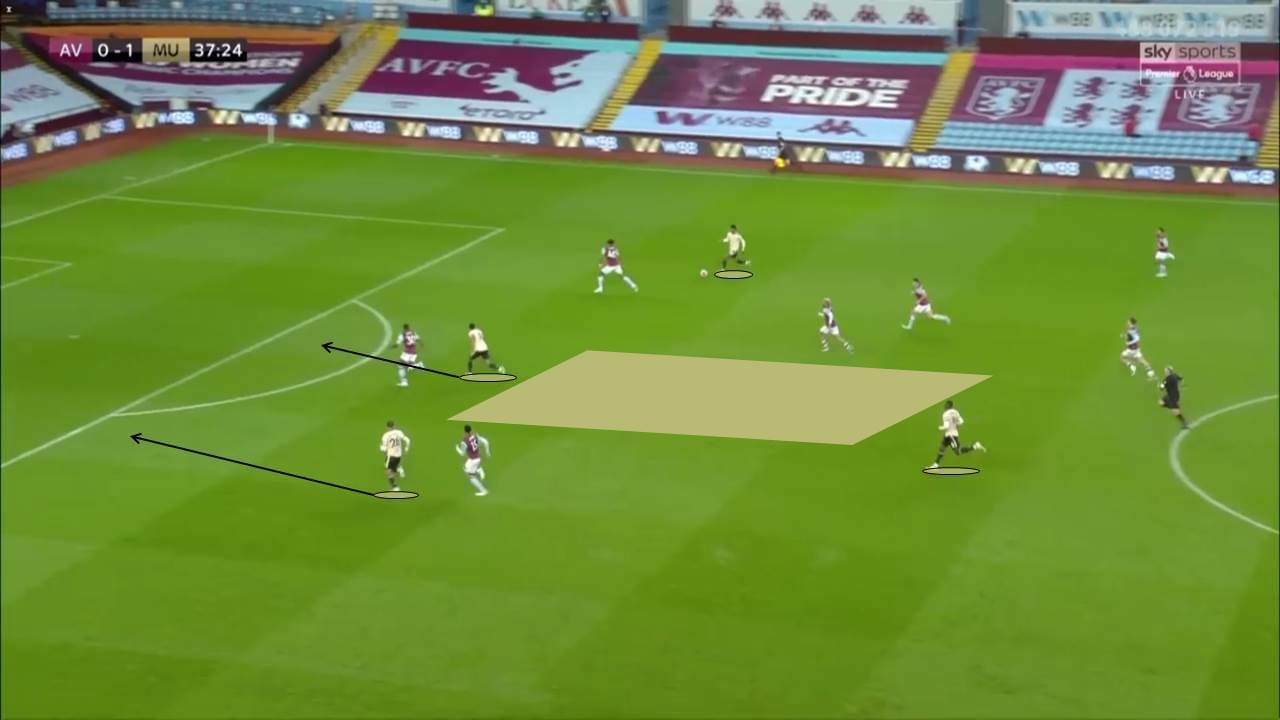
Another feature of Manchester United has been their variety in attacking tactics. When the two sides met earlier in the season, Smith had set up his side to defend against the United counter which was Solskjær’s go-to tactic. Now, however, United were able to dominate play with possession and the counter-attack simply became one of the options that they could use. This unpredictability meant that United were much more effective on the counter.
With United trying to break Villa down with short passing in the initial stages, Smith’s men expected this sort of attack and were more comfortable pushing their midfield forward. This provided excellent opportunities for United to strike on the counter with their pacey attack and the Villa midfield and defence were left scampering back to get into position. The strong and disciplined defensive structure that Villa had maintained so early in the game was now gone, with large gaps in the midfield opening up for Fernandes and Pogba to run into. The Villa defence would also be matched man for man by the United front three.
The range of attacking tactics used by Solskjær destabilised the structure of Aston Villa and eventually, they conceded another goal, with Greenwood making full use of his opportunity.
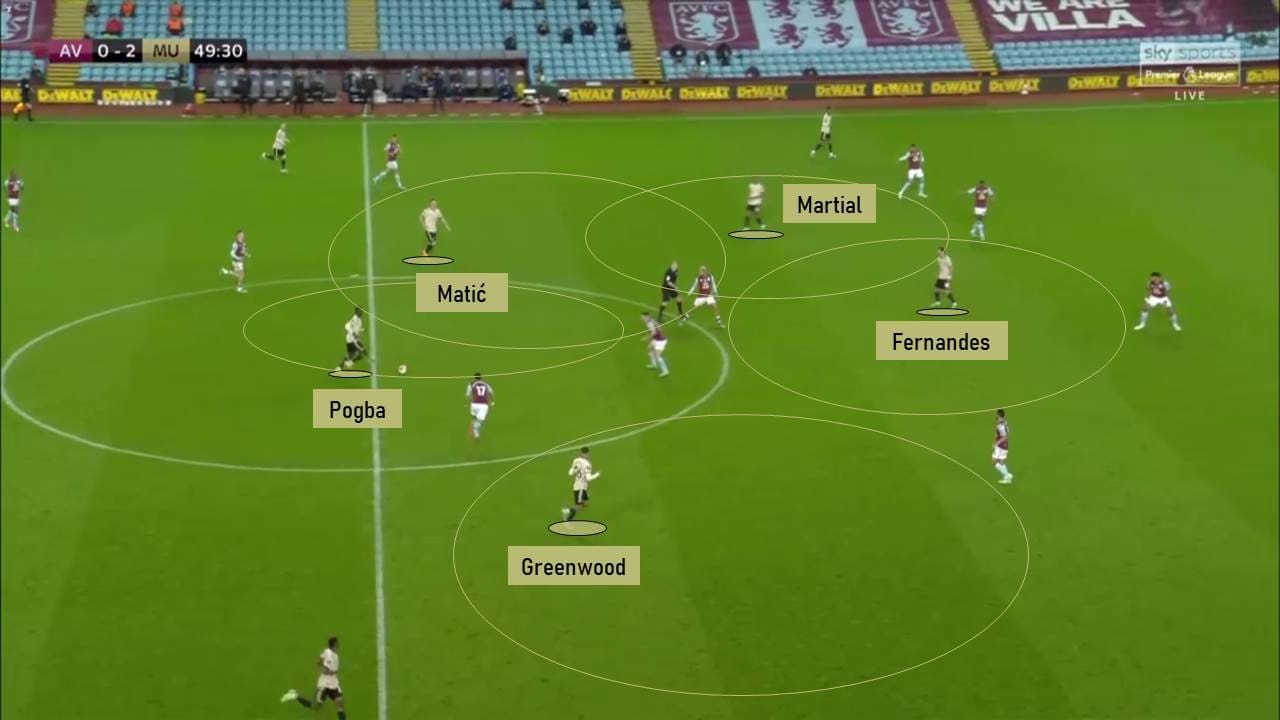
Now two goals ahead, Manchester United were in the driver’s seat with Aston Villa struggling. Villa knew that they had to try and get the game back in their hands but without their rigid defensive structure, it was always an uphill task. Their pursuit of a goal meant that they were disorganised at the back, leaving the United players with ample space. In the above image, we see just how much space the forwards had. Where Villa had suffocated Fernandes for space in the early stages, he now had more than enough room to dart into and receive the ball. He also had more time to pick out a pass as there was no defender who could close him down in time.
Matić could also move up freely to provide another passing option and could leave his defensive duties as well due to Villa’s lack of attacking threat. Going two goals down certainly seemed to affect Villa’s morale and Smith’s tactics seemed ineffective. His men could not close down their opposition quickly enough and seemed to be well out of the game by then. The midfield could not gather themselves and it was only a matter of time before United exploited the space that they had with Pogba receiving the ball at the edge of the box and having loads of time to put the ball in the net.
Dead rubber ending
The closing stages saw a lack of attacking initiative from both sides. Manchester United and Aston Villa did create a few chances but there was an evident drop in the attacking quality. Smith looked to make a few substitutions in his attack but Solskjær compensated for it with his defensive substitutions.
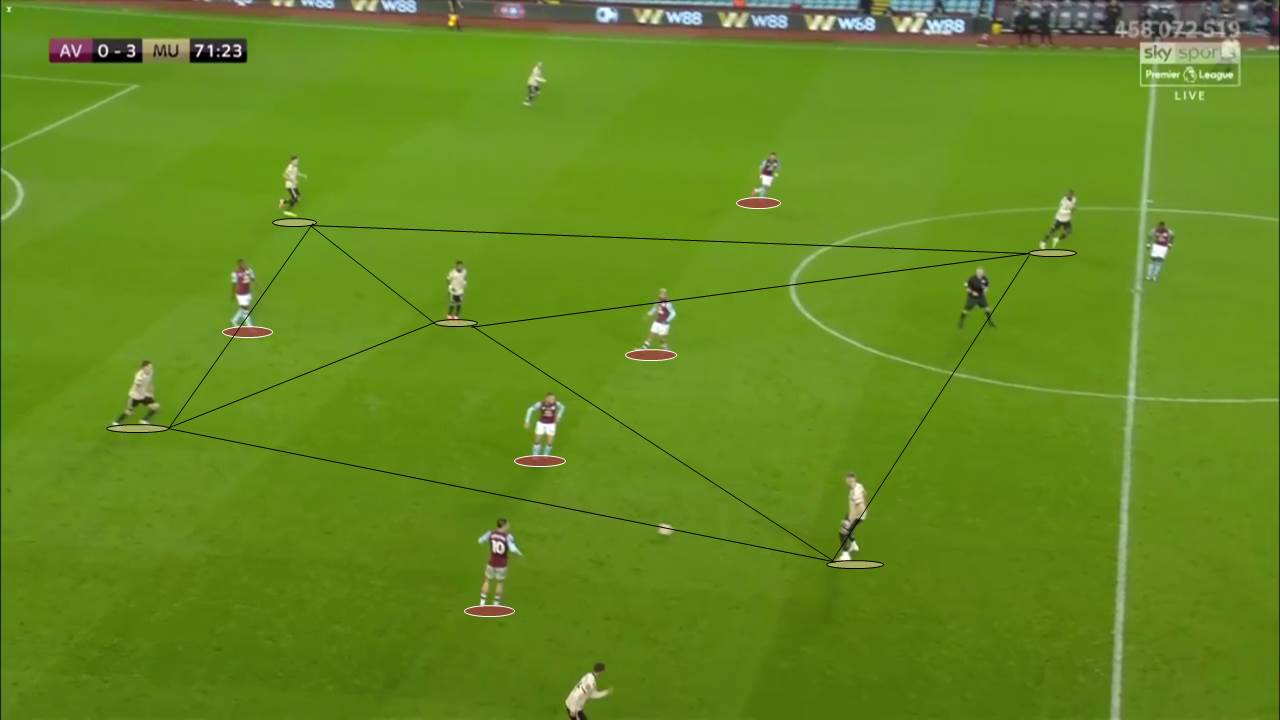
Aston Villa looked to maintain a 4-1-4-1 formation, with Keinan Davis coming on for Samatta and Conor Hourihane coming on for Anwar El Ghazi. Smith knew that goal difference would be key in the relegation battle and hoped to freshen up his attack in order to get at least a goal back. United brought on Fred and Scott McTominay for Fernandes and Matić, looking to play stronger defensively.
The defensive move of United was easily able to see off Villa’s fresh attack, however, with Fred dropping back to help the centre-backs. Villa’s flat-four in midfield were easily bypassed with a single pass to either McTominay or Pogba and United could take the ball to the other end.
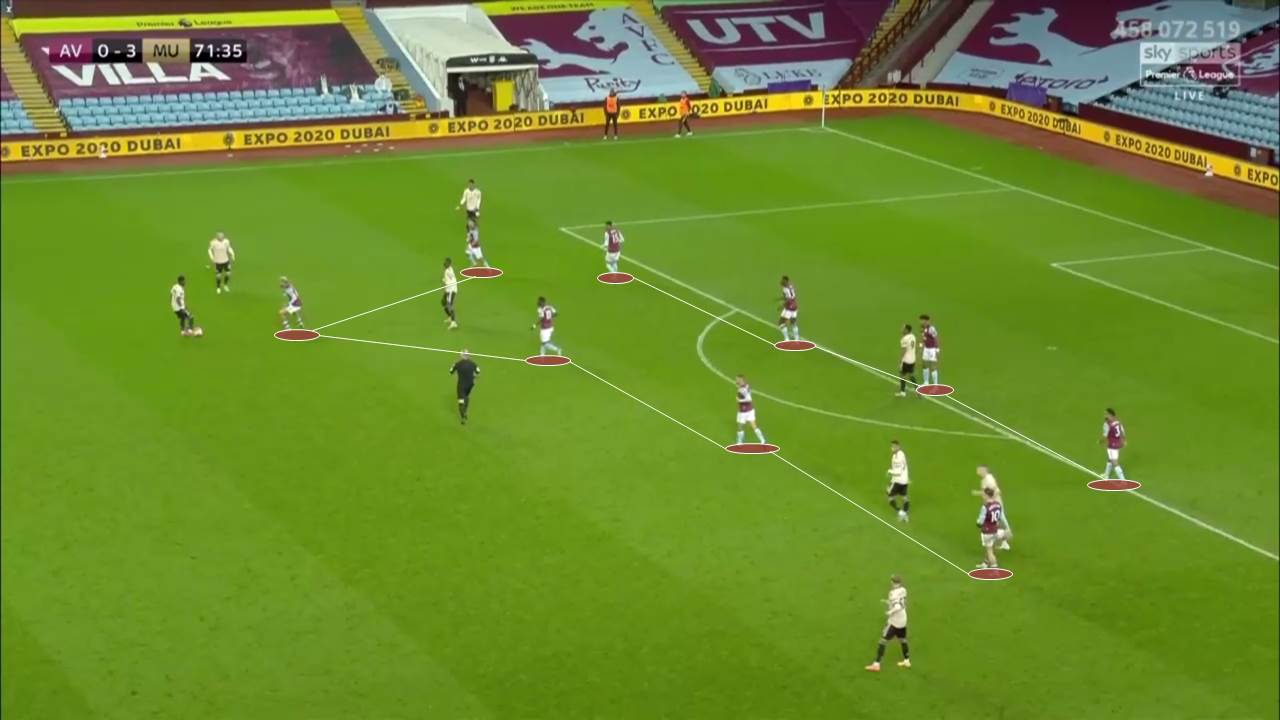
At the other end, however, Villa were now better structured in defence and could sort themselves into the 4-5-1 formation that they adopted earlier. United had no sense of urgency to break this defence now and were content with the occasional chance that they did create. They were still able to dominate possession and goal difference not being an issue for them, they were not necessarily in search of more.
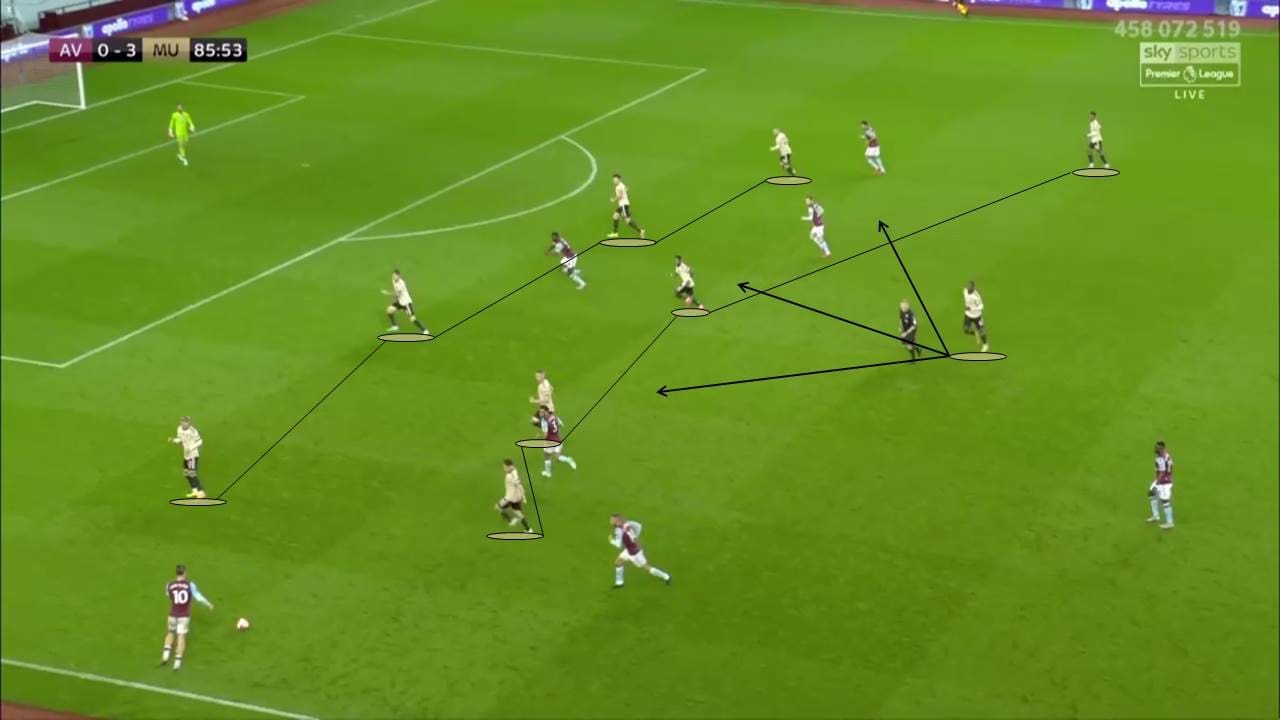
United also mirrored Villa’s defensive structure during the closing stages, forming a 4-5-1 with Pogba slotting into the midfield much like Grealish would for Villa. United had been open to late flurries of attacks in their previous fixtures but Villa could not do the same in this game. Their occasional attacks were dealt with easily with United maintaining their structure. Grealish could not create chances as he has done for Villa this season and proved largely unthreatening in these stages as well.
Conclusion
Manchester United became the first team in history to win four games in a row by a margin of three goals after their clinical performance in this game. Although being under pressure in the initial stages, United were able to stay patient and stick to their tactics, allowing them to gradually take control of the game. With four games to go, United would have to maintain this sublime form if they are to compete in the Champions League next season.
Aston Villa, however, missed their opportunity to get closer to the teams above the relegation zone. Smith would not be pleased with the way his side succumbed to United after dominating the initial stages and would have liked to come away with at least a point. A tricky run of fixtures follow for Villa and they would like to keep their hopes of staying up in their own hands. They are fast running out of games though and unless they see a drastic turn in form, they could be going down after just one season in the top flight, their shortest ever stint there.





Comments